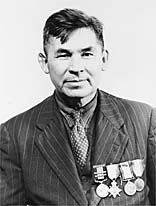In India in the eighteenth century, British soldiers with the skill to shoot an elusive bird, the snipe, were called “snipers.” The word morphed to describe those able to kill each other, notably the enemy in war, one at a time.
The sniper – or marksman, or sharpshooter, as he was also called — fought on both sides of the American Revolutionary War and remains a military mainstay today. The First World War was the war between the trenches, a gunshot apart. The addition of optical sights to the guns in the early twentieth century gave the sniper a new relevance, such that in due course each side used snipers to kill the other side’s snipers.
Canadians figured prominently on the Allied side in The Great War. The most prolific sniper was Francis “Peggy” Pegahmagabow, an Ojibwa from the Wasauksing First Nation. He had the highest number of “kills,” 378, among the Allied soldiers, and he also took more than 300 Germans prisoner. For this, for his scouting, and for his extraordinary bravery under rifle and machine-gun fire, he was the most decorated First Nations soldier in the First World War.
When the war first broke out, Canada, like most combatant countries, relied on volunteers. First Nations people — then called Indians — were initially discouraged from volunteering. In a masterpiece of convoluted hypocrisy, the Surgeon General informed Indian Affairs that, “Any hesitation in accepting Indians as volunteers was that, though British troops would not be a problem, the Germans might refuse to extend to them the privileges of civilized warfare.” First Nations people persisted in volunteering, in part because they wanted to come to the aid of the British monarchy which they saw as the guarantor of their rights. Pegahmagabow was an early volunteer and became one of the heroes of the war
Wakausking First Nation, formerly the Parry Island Reserve, lies just off the town of Parry Sound, Ontario, in the Georgian Bay, from whence I come. Yet, amongst locals who had great respect for veterans, I had never heard of his heroism or even heard Pegahmagabow’s name mentioned till I visited the Canadian War Museum a few years ago.
At a time when killing is mostly done from on high, as part of a team, it is hard to grasp that a single soldier, often acting alone, could do that much killing, keep his count, and not himself be killed — though he was wounded. At present, the most lethal American sniper is said to have more than 150 kills.
The much acclaimed novel Three Day Road, by the Aboriginal writer Joseph Boyden, about two Native snipers in the First World War, draws on the experience of Pegahmagabow — who also plays a minor role in the novel – whom Boyden heard of as a child.
Boyden doubts that Pegahmagabow enjoyed what he did. He did it because he was good at it and was asked to do so. As an Ojibwa, he came from an historically warrior society, and was reasserting his warrior identity.
The war, Boyden reminds us, was brutal, able to bring out the worst in any person: “You have to go for your most basic and brutal instinct, and put away all your civilized thinking about the world.”
The great majority of snipers on the Allied side were not aboriginal. Aboriginal people had a long tradition of hunting and killing animals, and the military was, understandably, willing to exploit that and turn it into killing humans. As Boyden puts it, those First Nations snipers were “not wigged out by the idea of blood and of skinning, and of what it takes to survive… [T]ranslating the hunting of animals to the hunting of humans is not that big of a step.”
There was also the simple fact that, with the war, Canadian society was willing, for the first time, to treat aboriginal people, soldiers in any event, as something close to equal, to provide them with employment, to contingently make their lives meaningful within the larger society. That, to the discredit of non-Aboriginal Canadians, was definitely not true before the war.
Yet most shamefully, when Aboriginal soldiers returned they encountered the same racism as before the war. Pegahmagabow was a hero but back on the reserve he still couldn’t vote in the country he had been willing to die for, and he was still at the mercy of the local Indian affairs agent, who was, historians tells us, an especially nasty official. Elected Chief, Pegahmagabow went on to became an activist and a leader amongst aboriginal people, which made him even more of a threat to officialdom.
During the Second World War, Pegahmagabow was a guard at an explosives plant at Nobel, just north of Parry Sound. My father worked on the line there, but I doubt he was aware of the credentials of the guard.
Pegahmagabow’s own First Nation people recognized and respected him. Waubgeshig Rice, now an Ottawa-based journalist and novelist, comes from the Wasauksing First Nation and returns frequently on weekends. Unlike myself, Pegahmagabow is a name he certainly knows from his childhood. He is remembered as a war hero and as a leader of his people.
There are no more Indian agents to harass First Nations people, who have become insistent at asserting their rights. Pegahmagabow not only has his place in the War Museum; a building at CFB Borden bears his name.



